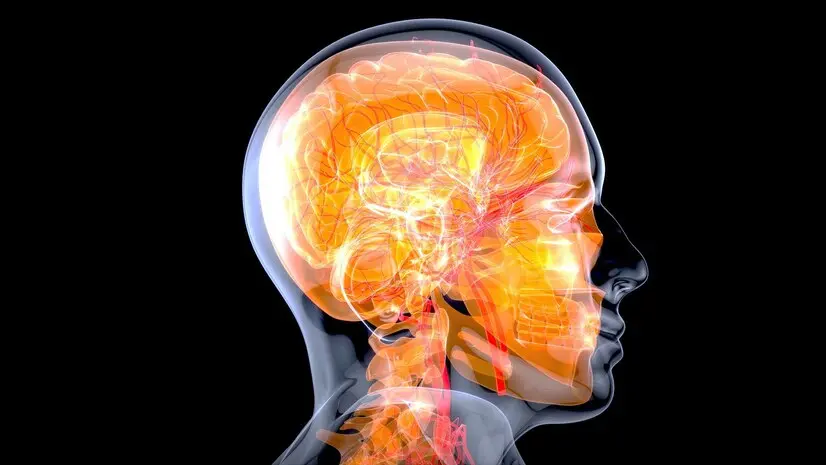Preventive Healthcare
Exploring Hydrocephalus: Causes, Symptoms, Types, and Treatment

Table of Contents
- What is hydrocephalus?
- Who can get hydrocephalus?
- What are the different types of hydrocephalus?
- What causes hydrocephalus?
- What are the symptoms of hydrocephalus?
- How is hydrocephalus diagnosed?
- Can hydrocephalus go away on its own?
- Is hydrocephalus treatable?
- How is hydrocephalus treated?
- What are the complications of hydrocephalus treatment?
- What is the outlook for hydrocephalus?
- Conclusion
What is hydrocephalus?
Hydrocephalus ("Hydro" means water and "cephalus" means head) is a neurological condition characterised by the accumulation of cerebrospinal fluid (CSF) within your brain's ventricles. This accumulation can increase the pressure inside your brain, potentially causing damage to your brain tissue and impairing its function.
Who can get hydrocephalus?
Hydrocephalus can affect people of all ages, from infants to older adults, but due to different hydrocephalus causes. The average prevalence of hydrocephalus around the globe is about 85 in 100000 individuals. However, the numbers can vary in the case of hydrocephalus in babies and hydrocephalus in adults.
What are the different types of hydrocephalus?
Hydrocephalus types are classified based on various underlying hydrocephalus causes. Here are the main types of hydrocephalus:
- Congenital Hydrocephalus: This hydrocephalus type often results from genetic factors or abnormalities in foetal development affecting the flow or absorption of CSF. This leads to hydrocephalus in babies.
- Acquired Hydrocephalus: It develops after birth and can occur at any age due to conditions such as infections, bleeding in the brain, tumours, or other medical conditions that disrupt CSF flow.
- Communicating Hydrocephalus: It is characterised by increased fluid accumulation throughout your ventricular system and subarachnoid space.
- Non-communicating Hydrocephalus (Obstructive Hydrocephalus): Occurs when there is a blockage within your ventricular system, preventing the normal flow of CSF.
- Normal Pressure Hydrocephalus (NPH): This hydrocephalus type typically affects older adults and is characterised by enlarged ventricles, but with normal pressure of CSF.
What causes hydrocephalus?
Common hydrocephalus causes include:
- Certain genetic conditions or developmental abnormalities like neural tube defects (such as spina bifida), Dandy-Walker malformation, or aqueductal stenosis.
- Infections such as meningitis, particularly in newborns, can cause inflammation in the brain and disrupt the normal flow or absorption of CSF, leading to hydrocephalus.
- Intraventricular haemorrhage, commonly seen in premature infants, can result in blood accumulation within the brain's ventricles, obstructing CSF flow. It is one of the main hydrocephalus causes.
- Brain tumours, whether benign or malignant, can obstruct the pathways through which CSF flows, leading to hydrocephalus. Tumours can be located within your brain or in the surrounding structures.
- Major accidents can damage your brain tissue or cause bleeding. This can lead to hydrocephalus.
- Cysts or lesions within your brain can interfere with the normal circulation of CSF, resulting in hydrocephalus.
What are the symptoms of hydrocephalus?
Hydrocephalus symptoms can vary depending on factors such as your age, the rate of fluid accumulation, and the underlying hydrocephalus causes.
Common hydrocephalus symptoms in adults may include:
- Headaches.
- Nausea and vomiting.
- Blurred or double vision, difficulty focusing, or uncontrolled eye movements (nystagmus) can result from pressure on the optic nerve.
- Memory problems, difficulty concentrating, and confusion, may arise.
- Hydrocephalus can lead to gait disturbances, difficulty walking, imbalance, and coordination problems.
- Increased frequency of urination may occur.
- You may have mood swings and irritability
Infants and Young Children:
- In infants, symptoms may include an abnormally rapid increase in head size (macrocephaly), bulging fontanelle (soft spot on the head), vomiting, poor feeding, irritability, and developmental delays.
How is hydrocephalus diagnosed?
Hydrocephalus diagnosis usually involves:
- Physical Examination: The doctor will gather information about your symptoms, medical history, and any relevant factors such as recent head injuries or infections. A thorough physical examination will be conducted to evaluate signs of increased intracranial pressure or neurological deficits.
- CT (Computed Tomography) Scan: This imaging test uses X-rays to create detailed cross-sectional images of your brain. CT scans can reveal enlarged ventricles and other abnormalities associated with hydrocephalus.
- MRI (Magnetic Resonance Imaging): MRI provides highly detailed images of your brain's structures and is particularly useful for assessing the flow of cerebrospinal fluid (CSF)
- Lumbar Puncture (Spinal Tap): This procedure involves inserting a needle into your lower back to collect a sample of CSF for analysis. It can help assess CSF pressure and composition.
Can hydrocephalus go away on its own?
In rare cases, hydrocephalus may resolve on its own, particularly if it's mild or temporary. It is seen in cases of temporary blockages or fluid imbalances. However, without treatment, most cases of hydrocephalus are chronic and require continuous medical management.
Is hydrocephalus treatable?
Yes, hydrocephalus is treatable. Hydrocephalus treatment options depend on the underlying cause, severity, hydrocephalus types and individual patient factors.
How is hydrocephalus treated?
Hydrocephalus is treated through various approaches tailored to each patient's specific needs. Surgical procedures are common and may involve the placement of a shunt to divert excess CSF away from your brain. An endoscopic third ventriculostomy to create a new pathway for CSF drainage is also common. In some cases, minimally invasive procedures or neuroendoscopy may be used. Medications to reduce CSF production or manage symptoms may also be prescribed.
What are the complications of hydrocephalus treatment?
Hydrocephalus treatment is conducted very carefully and usually does not have serious complications. However, in some cases, complications of hydrocephalus treatment may include infection at the surgical site, malfunction or blockage of shunts, over-drainage or under-drainage of CSF, and neurological deficits. Moreover, surgical procedures carry risks such as bleeding, damage to surrounding structures, and anaesthesia-related complications.
What is the outlook for hydrocephalus?
With appropriate management, many patients with hydrocephalus can lead fulfilling lives, although ongoing monitoring and treatment adjustments may be necessary, depending on the patient. However, without treatment, the chances of death due to hydrocephalus are very high, varying between 20% to 87%.
Conclusion
In conclusion, hydrocephalus is a complex condition that requires a multidisciplinary approach for effective management. Recognising symptoms, getting a timely diagnosis, and implementing appropriate treatment are essential for improving outcomes. Ongoing research shows that meningitis is one of the main causes of hydrocephalus in newborns and early diagnosis can prove to be a lifesaver. Which is why Metropolis Healthcare brings to you an affordable and accurate meningitis panel with comprehensive CSF fluid analysis without any hidden charges! Our state-of-the-art diagnostic labs strive to provide best-in-class pathology services trusted by top doctors across the country. Book your test today!























